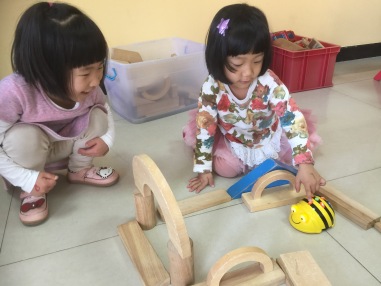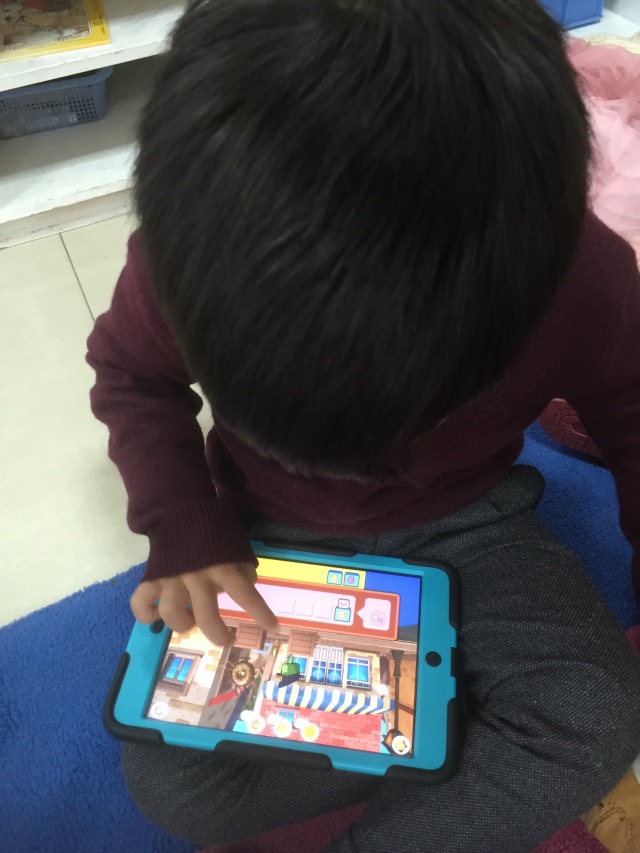Mathematics in the Primary Years Program (PYP): Negotiating Transdisciplanary Vs. Stand Alone
In the purest sense of the PYP, everything is the Unit of Inquiry (UOI), right? One of the greatest suppositions of transdisciplinary learning is to try to create enduring understandings that connect as many dots with the discrete subject areas. For example, when we think about how young children learn, when they play with blocks, they never think that they are “doing math” or “creating art” or “testing hypotheses”. So it is our duty to match their curiosity and creativity which curriculum that is relevant, meaningful and engaging. However, as children develop and their thinking matures, we need to challenge them with more complex ideas in our inquiry-based and concept-driven approach to learning. But with Math, it is probably the one subject area that can be the most difficult to naturally incorporate into UOI and make transdisciplinary due to the demands of the mathematical concepts. 
For example, here is a How We Organize Ourselves UOI for students age 5-6 years old that works great for math:
Systems help us to make meaning and communicate.
- systems in our community
- ways we use systems
- our responsibility within systems
Now, this is probably a great unit to develop the conceptual understanding that numbers are a naming system and, for a set of objects, the number name of the last object counted describes the quantity of the whole set; which can then help students to connect number names and numerals to the quantities they represent. (Phase 1, Number Strand of the IB Math Scope and Sequence).
But then, in this same year group, you have a How We Express Ourselves unit like this:
Creating and responding to art develops an understanding of ourselves and the world around us.
- what art is
- how the arts communicate different messages
- ways we respond and react to art
- the different ways that can express ourselves through art
At first glance, you are probably thinking, duh!–this is an “art” unit, it’s gotta be Pattern…….or maybe Shape and Space for Transdisciplinary Math (TD)? I could do both, right?
Well, you could, but then you would be “exposing” students to these ideas but not necessarily really developing their conceptual understandings. To further demonstrate how challenging this decision is, think about this conceptual understanding: Shape and Space Strand: Shapes can be described and organized according to their properties; Pattern: understand that patterns can be found in everyday situations, for example, sounds, actions, objects, nature. So now I am wondering which what part of the central idea or lines of inquiry supports either one of those strands?
You can see that unless you write central ideas and lines of inquiry that consciously make an effort to incorporate math, it can easily get nudged aside during UOI.
Now, this example is in the early grades, imagine how difficult it gets in the upper grades! How would you write a UOI that could be a “good fit” for teaching decimals, the conversations of fractions and understanding exponents? You could, but you’d have to have a POI that leaned toward STEM (Science, Technology, Engineering, and Math) and have staff that is incredibly skillful at writing this curriculum so that Social Studies, the Arts, and PSPE don’t get sacrificed in the process. Most schools don’t go to such efforts.
So thus we create “Stand Alones”, which are separate subject-specific units of inquiry, that we put into the PYP planner. There are many schools that do this for Math. Some schools do one-off or piecemeal planners for certain mathematical concepts that don’t fit into the transdisciplinary units while other schools just do this for upper year groups, yet others create a whole school Programme of Inquiry for math. (I won’t open up the conversation of how you might create a scope and sequence for math for these stand alones but please check out this blog post that details one school’s struggle to do so.)
In our school’s case, it was decided to create a POI that focused merely on Number and Pattern & Function Strands since these are the most difficult to incorporate into UOIs. With that in mind, most grade levels have TD maths running simultaneously with our Number/Pattern POI. As a disclaimer, it’s our first thinking on how we might approach improving mathematical thinking and learning at our school, so be gentle in your judgment. To create a POI for math is a daunting task, and there is no doubt that we will reflect and revise on ours.
In Grade 1, we are starting to encounter challenges when we look through the number of conceptual understandings and learning outcomes that need to be developed so we stopped and had a whole planning retreat to delve into this. As we looked through the IB Scope and Sequence and referenced the learning outcomes from other national standards, we wondered how much classroom time would it take to accomplish both Stand Alone AND TD Math? Furthermore, is having essentially “2 Maths” (2 Math Strands) going co-currently a sensible idea-and how might we make it fit better? At the end of our discussions and debates, we mapped out the rest of the year’s TD Math. In one UOI (Where We Are in Place and Time, CI: Homes reflect cultural influences and local conditions.), we decided to not make a TD Math link because it might be “a stretch” to do so and instead to just focus on Number. Here is the Number central idea and lines of inquiry that we will cover during that time:
Numbers often tell how many or how much
1. The amount of a number determines its position in a numeral
2. How we know when to regroup
3. How grouping numbers into parts can help us find solutions.
CONCEPTS – Function, Change, Reflection
ATTITUDES – Integrity, Confidence
LEARNER PROFILE: Knowledgeable
You can see that this unit has place value and regrouping strategies for addition and subtraction–one of the foundational conceptual understandings that must be well developed in Grade 1 and so needs more attention and time devoted to it.
Likewise, we decided that we would make one of our units (How the World Works, whose CI we are rewriting), heavy on the TD Maths and a little lighter on the Number POI because we needed to really spend more time on developing the conceptual understandings within the Data and Measurement Strands. This is the Number UOI during that time:
Patterns repeat or grow
1. The ways patterns can be represented.
2. We use pattern to infer and to make predictions.
CONCEPTS – Form, Connection
ATTITUDES – Creativity
LEARNER PROFILE: Thinker
As you can see, our examination and reflection process is just beginning when it comes to negotiating classtime with TD Math and our Number POI. Sharing our grade level’s experience in this blog does not only reveal a bit of our thinking process but perhaps you are contemplating your school’s struggle with striking a balance between Stand Alone Math and TD Math and have an idea that would help navigate this challenge.
I’m deeply curious what kinds of conversations your school has regarding Math and what have you done to address “coverage” of concepts. Since our school is in the early days of developing and refining our Number POI, sharing perspectives and theories about using the PYP framework would be helpful to discuss and debate in our larger IB community because all of us are striving to create the best learning experiences and outcomes for our learners. No pressure, but I’m hoping you will comment below. 🙂
Does your school have UOIs that were particularly successful at incorporating Math so that it was transdisciplinary?
How does your school balance TD Math and Stand Alone Math in the curriculum?
Developing learners as leaders is my joy! I am committed and passionate International Baccaluearate (IB) educator who loves cracking jokes, jumping on trampolines and reading books. When I’m not playing Minecraft with my daughter, I work on empowering others in order to create a future that works for everyone.
 After bobbing back and forth between the Early Years and 4th grade for the last couple years, I will be happy to settle in 1st grade for a while, where you get the best of the Early Years mindset (unfettered creativity and imagination) and yet starting to gain confidence and competence in Literacy and Numeracy skills, making it possible to go deep with developing their knowledge and thinking skills. Plus their minds aren’t as sullied with “can’ts” as the older grades are, making them so wonderfully teachable. Oh, the joy of learning!-for both me and them.
After bobbing back and forth between the Early Years and 4th grade for the last couple years, I will be happy to settle in 1st grade for a while, where you get the best of the Early Years mindset (unfettered creativity and imagination) and yet starting to gain confidence and competence in Literacy and Numeracy skills, making it possible to go deep with developing their knowledge and thinking skills. Plus their minds aren’t as sullied with “can’ts” as the older grades are, making them so wonderfully teachable. Oh, the joy of learning!-for both me and them. Recently, during a conversation about math standards with a fellow primary school teacher, we talked about how math symbols and algorithms can be very off-putting for students when they don’t understand the conceptual basis of an idea. We had a love rant over using inquiry-based approaches in order to conceptualize problems and build models in order to show visual representations. When done in this way, math can become suddenly interesting, even “beautiful”.
Recently, during a conversation about math standards with a fellow primary school teacher, we talked about how math symbols and algorithms can be very off-putting for students when they don’t understand the conceptual basis of an idea. We had a love rant over using inquiry-based approaches in order to conceptualize problems and build models in order to show visual representations. When done in this way, math can become suddenly interesting, even “beautiful”. nventiveness.
nventiveness.




















